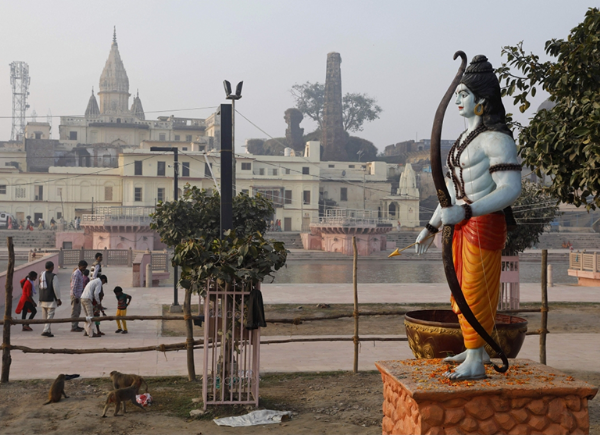Plan your Ayodhya Trip! Not just Ram Janmabhoomi, here are 6 places associated with Bhagwan Ram
Ayodhya, a city steeped in ancient mythology and recognised as the birthplace of Bhagwan Ram, offers tourists a diverse range of historical and cultural attractions.
Ayodhya, a city steeped in ancient mythology and recognised as the birthplace of Bhagwan Ram, offers tourists a diverse range of historical and cultural attractions. The birthplace of Bhagwan Ram, also called Ram Janmabhoomi, stands as a major pilgrimage site, and the newly-constructed Ram Mandir (to be inaugurated on January 22, 2023) will attract even more worshippers from across the nation.

While most people are all set to visit the temple, here are some of the lesser-known treasures that make Ayodhya a worthwhile trip that goes beyond the impressive Ram Mandir.
- Ram Ki Paidi
On the banks of the holy river Saryu, Ram Ki Paidi is a series of ghats. The riverfront brings forth an outstanding Landscape mainly in floodlit night. To the devotees, these serve as a platform that is said to have come to wash away their sins by taking a dip in the river.
- Raja Dashrath Mahal :-
Dashrath Mahal (Dashrath Palace) is where Bhagwan Shri Ram spent his childhood in the Treta Yuga. The same Dashrath Mahal which witnessed the incarnation of Bhagwan Shri Ram in the Treta Yuga is now about to witness the auspicious moment of his return in the Kali Yuga. This is the very Dashrath Mahal that, even during the 500 years of decline, continued to provide evidence of the existence of Bhagwan Shri Ram’s temple on the present Ram Janmabhoomi area.
- Hanuman Garhi
It is 1 km from the Ayodhya railway station. The temple was constructed by Vikramaditya which later came to be known as Hanuman Garhi. It is believed that BhagwanHanuman or Pavan Putra lived here guard Ayodhya. At the main temple, you will find that a beautiful idol of Bal (Young) sitting on the lap of Maa Anjani.
- Nageshwarnath Temple
स्वर्गद्वारे नरः स्स्रात्वा दृष्ट्वा नागेश्वरं शिवम् ।
पूजयित्वा च विधिवत संर्वान् कामानवाप्नुयात् ।। 1।1
The temple is dedicated to Bhagwan Shri Nageshwar Nath, the presiding deity of Ayodhya. It is believed that this beautiful temple was built by Bhagwan Rama son King Kusha. The Shivalinga present in the temple is quite ancient.
Ayodhya, Uttar Pradesh
— TimesTravel (@TOItravel) October 12, 2021
The birthplace of Lord Rama, Ayodhya on the banks of the Sarayu River is believed to be the capital of the ancient Kosala Kingdom ruled by King Dasharatha. Some of the prominent places here are Kanak Bhawan, Nageshwarnath Temple, Ramkot, Hanuman Garhi. pic.twitter.com/mrQsrEaHW5
As per folklore, King Kush was taking bath near River Saryu when his arm le fell in the water, it was picked up by a naagkanya who was in love with him. Since shewas a devotee of Bhagwan Shiva, King Kush got the temple constructed for her.
Being one of the most important and venerated temples in Ayodhya, in attracts large crowds of devotees from all over during the festivals of Trayodashi and Mahashivaratri. The presented if ice of the temple was constructed in 750 AD.
- Sita ki Rasoi
Sita ki Rasoi, located on the northwest border of the Ram Janmabhoomi in Rajkot, Ayodhya, is claimed to be a historic kitchen used by the goddess Sita. This sacred location is now a temple that houses certain display vessels. It was built in close proximity to the Ram Janmabhoomi. This Sita Ki Rasoi is a subterranean kitchen, and it is one of the two kitchens honoured in Sita’s name.
- Choti Chawni
The caves of Choti Chawni are one of the magnificent structures to be present in the vicinity in terms of architecture and design. Also known as Valmiki Bhawan, the structure is made out of white marble and comprises 34 heritage caves. The tranquility of the place is further enhanced by the presence of a Kailash temple on the premises, elongating the peaceful atmosphere.
Total Views |

